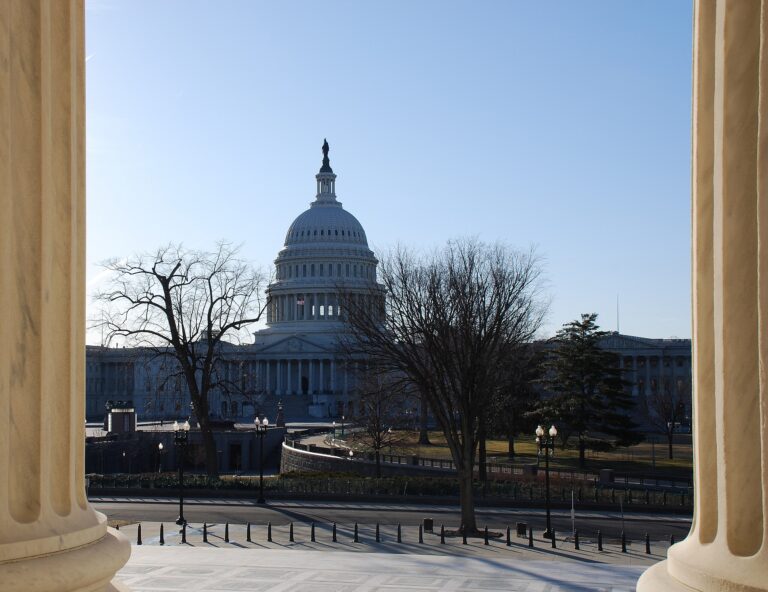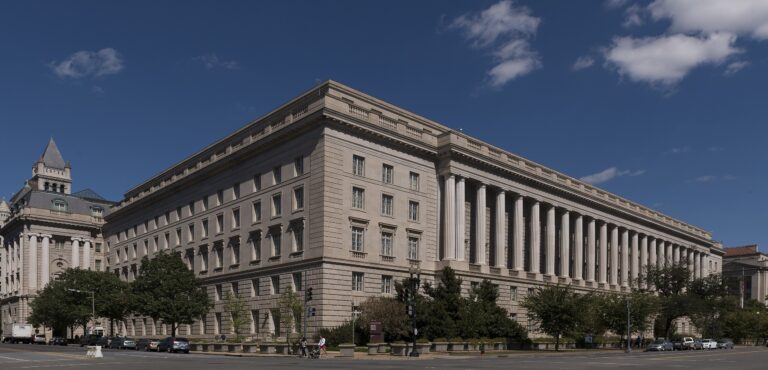
Lifting the Mask on Undetected Religious Freedom Violations
Dennis P. Petri
Costa Rican Pacific Coast, Wikimedia Commons (CC BY-SA 4.0)
This article is part of our virtual symposium and essay series, “Masking Religious Freedom Violations.” Read more here.
In 2006, Brian Grim and Roger Finke noted that religion was largely absent from international quantitative studies, partly due to a lack of high-quality data. Today, this gap has narrowed significantly, with many sophisticated Freedom of Religion or Belief (FoRB) datasets now available. Despite this progress, two main challenges persist. First, many FoRB datasets fail to capture violations of certain dimensions of religious freedom simply because they don’t account for them in their variables. Second, state and non-state actors are increasingly adept at concealing these violations, making them harder to detect.
These limitations inspired the Center for the Study of Law and Religion, Canopy Forum, and the International Institute for Religious Freedom to launch the “Masking Religious Freedom Violations” essay series and symposium. Our goal is to highlight overlooked forms of religious discrimination, address data collection gaps, and propose better policy responses. Additionally, we aim to explore new frameworks to understand the complexities of religious discrimination.
In this essay, I begin by introducing some of the multiple dimensions of religious freedom. I then introduce the concept of masking religious freedom violations. Next, I present evidence of masking religious freedom violations from my research in Latin America. I also explore two conceptual lenses that could provide solutions: human security and political economy. Finally, I call for improved frameworks and language to better capture the full spectrum of religious discrimination.
The Multiple Dimensions of Religious Freedom
Article 18 of the International Covenant on Civil and Political Rights presents religious freedom as a multidimensional concept that protects the right to practice a religion individually or collectively, as well as in public or private. All human rights are indivisible and interdependent, but in the case of religious freedom, many human rights directly converge; religious freedom can only be enjoyed fully if other important freedoms such as freedom of expression, conscience, movement, association, etc. are also guaranteed.
FoRB datasets, using different methodologies, attempt to measure the full breadth of religious freedom violations, and do an increasingly good job at covering many of its dimensions. An important distinction, popularized by Brian Grim and Roger Finke, is that between government restrictions and societal hostilities, it is visible how religious minorities can be under threat both by state and non-state actors. The Religion and State Project directed by Jonathan Fox, which originated independently, has integrated both perspectives and developed a comprehensive set of variables to describe them.
Another helpful distinction, introduced by my friend and mentor Dr. Ron Boyd-MacMillan is that between “squeeze” and “smash.” Squeeze refers to things like pressure and discrimination, whereas smash refers to physical violence. Religious discrimination is often a combination of both, but patterns vary depending on the context. This distinction is central to the Christian-focused World Watch List of Open Doors International, which observes this squeeze across the private, family, community, national, and church spheres. Smash (physical violence) is measured separately. The Violent Incidents Database of the International Institute for Religious Freedom focuses on quantifying smash following an events-based approach.
Many implicitly assume that the term “persecution” should be reserved only for the most egregious types of violations. I believe this is misleading because religious discrimination should rather be viewed as a spectrum, ranging from low to high intensity abuses. In my own research, I devised a continuum that operationalizes religion as both a source of identity and a driver of behavior. Even though Article 18 of the ICCPR explicitly refers to various forms of manifestation of religion (“observance, practice and teaching”), most FoRB datasets implicitly give more weight to the consequences of religious identity than of behavior inspired by religion. The latter is the case when it is viewed by the community or the powers that be as deviant or as a threat. Consequently, they overlook many forms of religious discrimination relevant to Latin American contexts, which I will revisit below.
Inspired by Dutch reformed political philosophy, I’ve also proposed how religious freedom is expressed in different spheres of society, showing it cannot be confined to freedom of worship. Religion is evidently expressed in worship, but it is also expressed in all other spheres of society. A religious person is not just religious in private, but takes their religion with them when they go to school, to their workplace, or indeed in their political participation. Yet, too often, FoRB is narrowed to freedom of worship.
In line with General Comment 22 by the United Nations Human Rights Committee, which provides an expert interpretation of the scope of Article 18 of the International Covenant on Civil and Political Rights, religious freedom is “far-reaching and profound.” It essentially protects all the dimensions cited above: individual and collective, public and private, physically violent or not, low and high intensity, and protects against abuses caused by state and non-state actors, expressed through pressure and physical violence, resulting both from identity as well as from behavior, and as they are manifested in different spheres of society.
Introducing Masking Religious Freedom Violations
Masking religious freedom violations refers to restrictions of religious freedom that are insufficiently detected by FoRB datasets because they focus too narrowly on some dimensions of religious freedom and disregard others. This may be the result of operationalization choices, for example when they exclusively focus on government discrimination like the religious freedom variable in the Varieties of Democracy dataset, or on overt displays such as the prohibition of religious literature, restricted access to places of worship, and limitations on the registration and activities of religious organizations, whilst disregarding others. Blind spots can also appear because of data availability challenges, which can be expected to be difficult in contexts where religious discrimination occurs. It also happens that the state or non-state actors target religious minorities in ways that are not easily interpreted as religious freedom violations. I will provide some examples of this in the next section.
Agnotology, the study of culturally induced ignorance or doubt, can provide a useful framework for understanding concealed religious freedom violations. In this context, state or non-state actors often deliberately obscure or distort information about religious repression, making it difficult to detect or measure such violations accurately. This strategic manipulation can be seen in various forms, such as underreporting incidents, redefining what constitutes religious freedom, or concealing acts of discrimination under the guise of national security or cultural norms.
For instance, governments might suppress reports of religious persecution or frame it in non-religious terms, thereby preventing human rights organizations from collecting reliable data. Similarly, non-state actors, such as extremist groups, may mask religious motives behind other forms of violence, making it challenging for observers to attribute these violations to religious discrimination. Agnotology highlights how the intentional creation of ignorance can perpetuate the invisibility of these violations and hinder efforts to promote and protect religious freedom.
When viewed through the lenses of Jacques Derrida, Martin Heidegger, and phenomenology, agnotology reveals how religious freedom violations can be hidden or misrepresented. Derrida’s concept of “unveiling” shows how language can obscure reality, as state actors may frame persecution as “public safety” or “cultural preservation.” Heidegger’s critique of reason suggests that even seemingly solid legal frameworks for protecting religious freedom may conceal deeper truths. Phenomenology, focused on lived experience, urges us to move beyond data and listen to personal narratives to uncover hidden discrimination. Together, these perspectives highlight the need for more nuanced tools and interdisciplinary methods to lift the “mask” on hidden or underreported religious freedom violations.
Missed Forms of Religious Discrimination & FoRB measurement Tools in Latin America and beyond
Historically, the study of religious freedom in Latin America has centered on church-state relations. While this is an important aspect of FoRB in a region historically dominated by catholicism, other significant dimensions of religious freedom have been relatively neglected.
In Cuba, the Communist Party has enforced anti-religious policies since the 1959 revolution, but less attention is given to the subtle ways the regime restricts religious freedom. For example, almost no permits for worship spaces have been granted, forcing gatherings in private homes (the casa-culto), which are sometimes shut down under zoning laws rather than explicit religious bans. Additionally, the government targets critical religious leaders with fabricated black market accusations, masking religious discrimination as criminal charges. The arbitrary application of laws creates a climate of uncertainty, ultimately discouraging religious expression – a nuance often missed by FoRB measurement tools.
Turning to the role of non-state actors, I have found organized crime to be a significant violator of religious minorities’ rights in countries such as Mexico, El Salvador, Colombia, and Brazil. Many overlook this issue, arguing that organized crime lacks a religious motive. While this may be true in many cases, the absence of a religious motive is irrelevant. Religious leaders become targets when their behavior—such as drug rehabilitation, youth work, support for migrants, or broader human rights activism—interferes with the interests of organized crime. These leaders’ actions are motivated by religious convictions, and the attacks on them inhibit their free exercise of religion. However, this is often not reflected in FoRB datasets, except for the World Watch List.
In indigenous territories in Latin America, religious freedom can be restricted at both the collective and individual levels, but these violations are not easily observed. Collectively, restrictions occur when external actors—whether state forces, criminals, or multinational corporations—encroach on indigenous lands, which are viewed in most indigenous worldviews as sacred. But this requires acknowledging in non-Western communities the land is not just seen as a resource but as a living, spiritual entity that holds intrinsic sacred value. Therefore, any form of encroachment on indigenous lands should be understood as a religious freedom violation. At the individual level, most analyses fail to recognize the existence of minorities within indigenous communities who convert to other faiths and face reprisals from their own community.
On this forum, I have also previously discussed how complex conflicts, such as those in Northern Nigeria, are too often dismissed as non-religious. Many conflicts are multifaceted, and it is incorrect to disregard the religious dimensions that often coexist with ethnic, economic, and political factors. Additionally, in other research, I have highlighted that the nation-focused approach of most datasets conceals important subnational variations in religious freedom violations.
Let us now consider two disciplinary approaches that may help better identify concealed violations of religious freedom: human security and political economy.
The Human Security Lens
The introduction of the human security paradigm by the United Nations’ Development Programme in 1993 marked a shift from state-centric security concerns, such as nuclear proliferation, to a more individual-centered approach. This reframing expanded the understanding of security to encompass multiple dimensions—environmental, economic, health, personal, and political—emphasizing that individuals, like states, require protection in various aspects of life. This conceptual shift brought human rights and sustainable development into focus on the global stage.
Although religion is not usually considered in human security literature, human security introduces a new way to consider security and conflict that is particularly relevant for the analysis of the vulnerability of religious minorities. As Taylor Owen claims, “the very point of human security is to shift our attention to threats usually not considered, and most likely not measured.” It encourages a holistic, inductive approach, which seeks to understand the specific threats faced by communities rather than imposing predefined categories.
This approach is particularly useful at the subnational level, where local contexts can shape how security threats manifest. Expert input and flexible observation methods help uncover threats that may not align with conventional frameworks but nonetheless impact religious minorities. By adopting this broader perspective, researchers can identify previously overlooked forms of persecution and contribute to a more comprehensive understanding of human security.
The Political Economy Lens
The political economy approach emphasizes that religious freedom violations extend beyond physical violence, encompassing economic and social barriers that often go unnoticed. Recognizing these subtler forms of discrimination is crucial to understanding the full scope of religious freedom issues.
Competition for scarce resources often leads political leaders to exploit religious identities, fostering divisions between religious groups. This dynamic is evident when majority groups gain governmental power and frame their interests against religious minorities, as seen in India and Egypt.
Religious minorities frequently face discrimination in accessing resources like loans, education, and essential goods like fertilizers. These barriers, whether intentional or not, have significant economic and social consequences. Examples include caste-based discrimination in India, fabricated legal charges in authoritarian regimes, and restrictive zoning laws in both Western and developing nations. While freedom of worship may be respected, structural exclusions limit broader participation in society. Additionally, development planning must account for religious freedom, as seen in the “Closing the Gap” project by USIP/USAID, which highlights restrictions on religious organizations importing humanitarian supplies as a violation of religious freedom.
The Need for Improved Frameworks and Language
This symposium delves into the complexities of religious discrimination, pushing beyond traditional analyses and narrow definitions of religious freedom. It seeks to broaden the scope to include economic, social, and political dimensions, thereby creating a more comprehensive framework to understand the challenges faced by religious minorities worldwide.
Many outdated assumptions need to be reconsidered: conflicts don’t need to be exclusively religious, persecution doesn’t have to be intentional, religiously motivated, or physically violent, and state involvement isn’t always applicable. Religious freedom encompasses much more than freedom of worship; it includes the ability to act freely across all areas of life. And we must avoid the inflationary use of terms like “persecution.” By recognizing the full spectrum of violations and discarding narrow definitions, we can better address the real, multidimensional challenges that religious minorities face globally. ♦

Dennis P. Petri, PhD is the International Director of the International Institute for Religious Freedom and Founder and scholar-at-large of the Observatory of Religious Freedom in Latin America. He is a Professor in International Relations and Head of the Chair of Humanities at the Latin American University of Science and Technology and the Latin American Faculty of Social Sciences. He is the author of The Specific Vulnerability of Religious Minorities, a book on undetected religious freedom challenges in Latin America.
Recommended Citation
P. Petri, Dennis. “Lifting the Mask on Undetected Religious Freedom Violation.” Canopy Forum, November 20, 2024. https://canopyforum.org/2024/11/20/lifting-the-mask-on-undetected-religious-freedom-violations/.
Recent Posts










